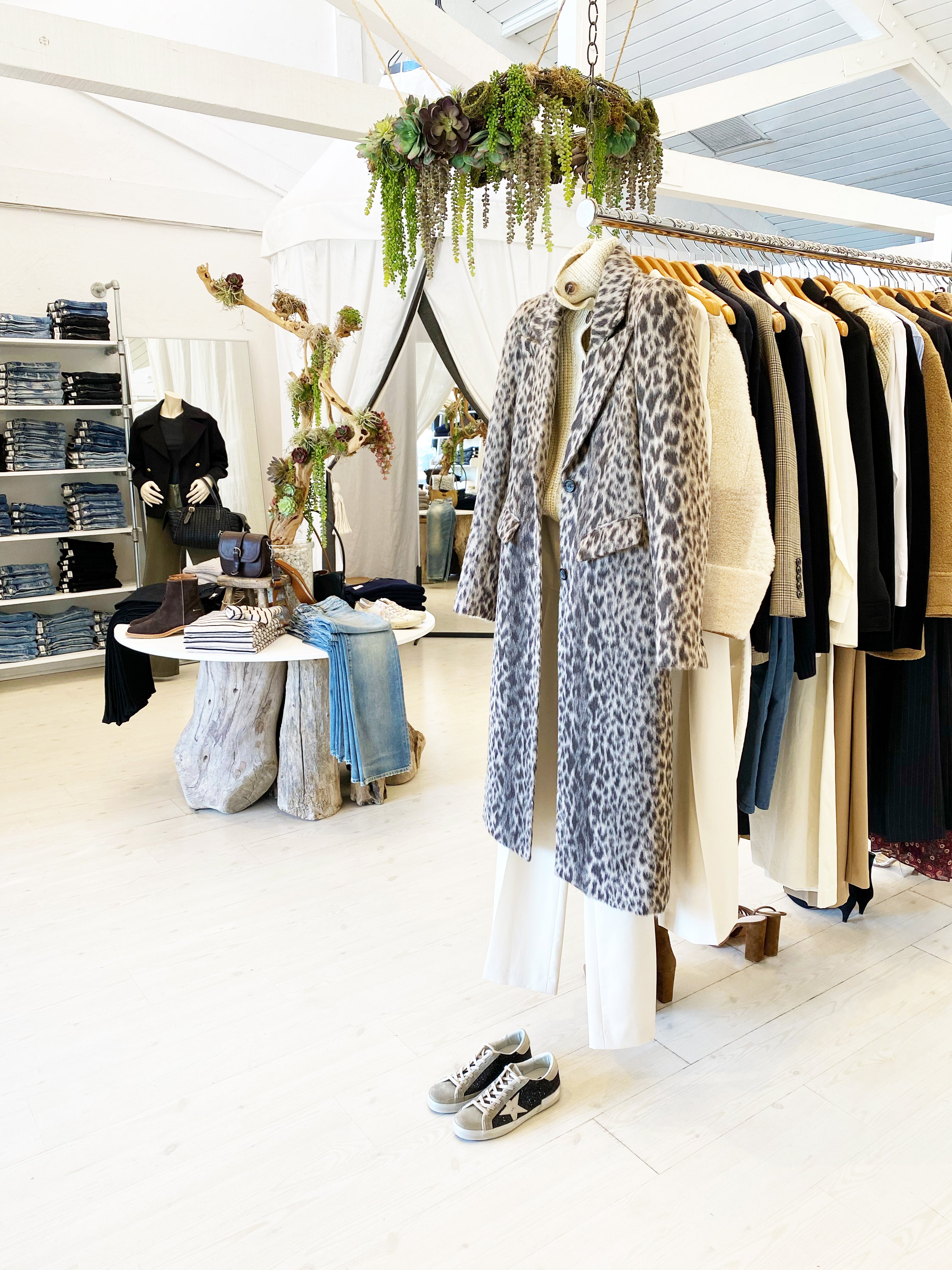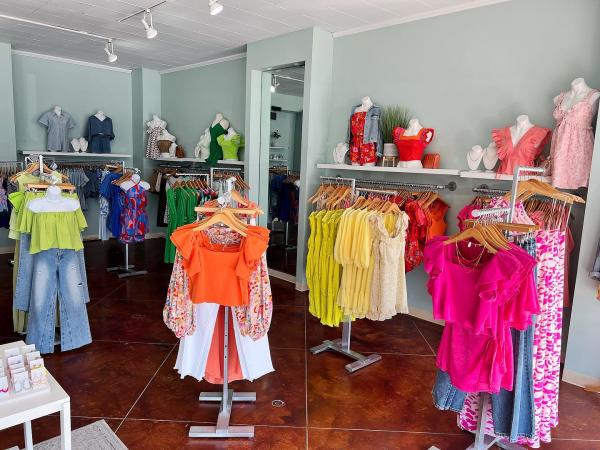Top 10 Must-Have Pieces from Your Fave Boutique Fashion Shops
Top 10 Must-Have Pieces from Your Fave Boutique Fashion Shops
Blog Article
Lasting Fashion: Exactly How Eco-Friendly Garments Is Forming the Future of Design
As the garment industry deals with boosting analysis over its ecological influence, the rise of sustainable fashion provides an appealing option that straightens design with eco-friendly duty. Using innovative materials such as plant-based fabrics and recycled fibers, together with sophisticated techniques like digital and 3D printing, designers are redefining what it implies to be trendy in the contemporary age. Concurrently, the growing appeal of upcycling and second hand society is cultivating a shift in the direction of a round economic situation. Yet, how does this motion truly affect the future trajectory of style, and what challenges lie ahead in its prevalent fostering?
Innovative Sustainable Products
As the style industry grapples with its ecological influence, ingenious sustainable materials have actually arised as an essential option for decreasing eco-friendly impacts. These products not just reduce dependence on fossil fuels however likewise decrease damaging pesticide use and water usage.
Along with plant-based products, improvements in biofabrication have caused the advancement of lab-grown textiles. Mycelium natural leather, stemmed from mushroom roots, presents a biodegradable and versatile alternative to pet natural leather. Its production results in substantially reduced carbon emissions and water usage, making it a more lasting choice for fashion designers seeking to line up with eco-friendly methods.
Recycled products are additionally acquiring traction, with polyester made from recycled plastic bottles standing for a significant advancement. This technology not just diverts plastic waste from oceans and landfills however also reduces power usage contrasted to creating virgin polyester. Together, these materials emphasize the capacity for a more lasting garment industry, leading the method for eco mindful layout and manufacturing.
Eco-Conscious Production
Building on the innovations in sustainable materials, the apparel industry is likewise re-evaluating its manufacturing procedures to better reduce ecological impact. Key approaches consist of minimizing water consumption, reducing carbon emissions, and removing unsafe chemicals. By embracing closed-loop systems, suppliers aim to recycle water and energy successfully, substantially diminishing waste. The assimilation of renewable resource sources, such as solar and wind power, into production centers further stops dependence on nonrenewable fuel sources.
An additional important facet is the reduction of harmful chemicals traditionally made use of in coloring and completing textiles. Eco-conscious producers are moving in the direction of plant-based dyes and waterless dyeing technologies, which not only protect regional ecological communities but additionally boost worker security. Technologies like digital printing reduce fabric waste and energy consumption, supplying a cleaner alternative to typical techniques.
Furthermore, openness and traceability have become extremely important. With the advancement of blockchain innovation, business can now supply thorough insights right into their supply chains, ensuring honest and ecologically friendly practices at each step. This openness develops consumer depend on and motivates brands to keep high sustainability requirements. As the demand for eco-conscious items expands, suppliers are compelled to innovate, ensuring that the future of style is both elegant and lasting.
The Increase of Upcycling
Upcycling, a transformative technique in lasting fashion, entails artistically repurposing discarded materials right into brand-new, high-quality items. This innovative approach not just lowers waste but also reduces the need for raw products, therefore decreasing the environmental impact of clothes production. By reimagining and rebuilding existing items, designers and style brands have the ability to infuse creativity our website right into their collections while advertising ecological duty.

Furthermore, the upcycling movement has actually encouraged local business and independent designers, that typically lead in development due to their dexterity and creative thinking. By maximizing the plentiful availability of extra materials, these entities add to a round economic climate, demonstrating that style can be both elegant and sustainable. Through upcycling, the sector takes considerable strides towards an extra responsible and mindful future.
Thrift Culture's Influence
The blossoming thrift society substantially reshapes the landscape of lasting fashion, highlighting the importance of conscious consumption. This social shift urges consumers to welcome used apparel, thus reducing the demand for brand-new garment production and decreasing environmental influence. Thrift buying not only prolongs the lifecycle of apparel yet likewise decreases the carbon footprint linked with manufacturing, transporting, and taking care of clothing.
A vital element of second hand society is its democratization of fashion. By using a wide range of designs from various ages at economical costs, second hand stores make fashion easily accessible to a broader audience. This ease of access cultivates a sense of uniqueness and creative thinking, as customers mix and match distinct pieces to curate individualized closets without adding to the fast fashion cycle.
Furthermore, second hand society advertises circularity in vogue, straightening with the concepts of a round economy. By recirculating garments, the cycle of waste is additional reading interrupted, and resources are saved. This method sustains a change from a direct "take-make-dispose" design to a much more lasting structure. As more designers and consumers embrace thrift culture, the fashion business is obliged to adapt, integrating sustainable practices to meet the growing need for eco-conscious choices.

Future Trends in vogue
Style's evolution is progressively formed by sustainability-driven initiatives and technological advancements. One prominent trend is the increase of electronic style, where digital garments can be worn in enhanced truth settings, significantly decreasing textile waste.
In addition, the assimilation of blockchain innovation uses brand-new possibilities in transparency and traceability, allowing consumers to confirm the sustainability qualifications of their apparel. boutique fashion. This ensures accountability in supply chains and promotes honest sourcing methods. 3D printing is yet an additional technology that assures to revolutionize manufacturing processes by enabling on-demand production, thus decreasing excess stock and waste
Furthermore, the advancement of bio-fabricated materials, such as lab-grown leather and plant-based textiles, presents sustainable choices to traditional products. These technologies lower dependence on pet products and resource-intensive crops. As these technologies mature, they are positioned to change the style landscape, merging style with sustainability. The future of fashion, therefore, exists in a smooth blend of innovation, development, and ecological responsibility.
Verdict
The makeover of the garment industry via sustainable practices shows an essential shift in the direction of ecological accountability. The assimilation of ingenious materials, eco-conscious production techniques, and the embracement of upcycling and second hand culture underscores a dedication to decreasing eco-friendly footprints. As these techniques get momentum, they redefine the sector's narrative by focusing on ethical and lasting choices. This advancement not just straightens style with ecological sustainability however also establishes a criterion for future patterns concentrated on obligation and technology.
As the style sector faces boosting analysis over its environmental effect, the increase of lasting fashion provides an appealing choice that straightens style with environmental obligation.As the style sector grapples with its environmental impact, ingenious lasting products have actually arised as a vital option for lowering ecological footprints. Together, these materials highlight the capacity for a much more lasting style market, leading the method for eco aware layout and manufacturing.
Structure on the innovations in sustainable materials, the style sector is additionally re-evaluating its production procedures to better reduce environmental influence. boutique fashion.Upcycling, a transformative technique in lasting fashion, includes creatively repurposing discarded materials right into brand-new, high-quality products
Report this page